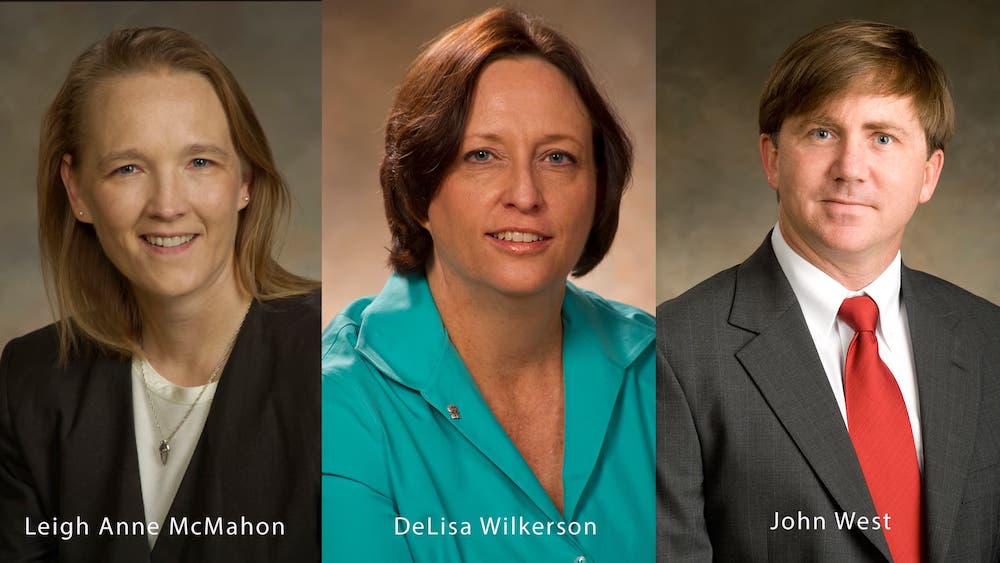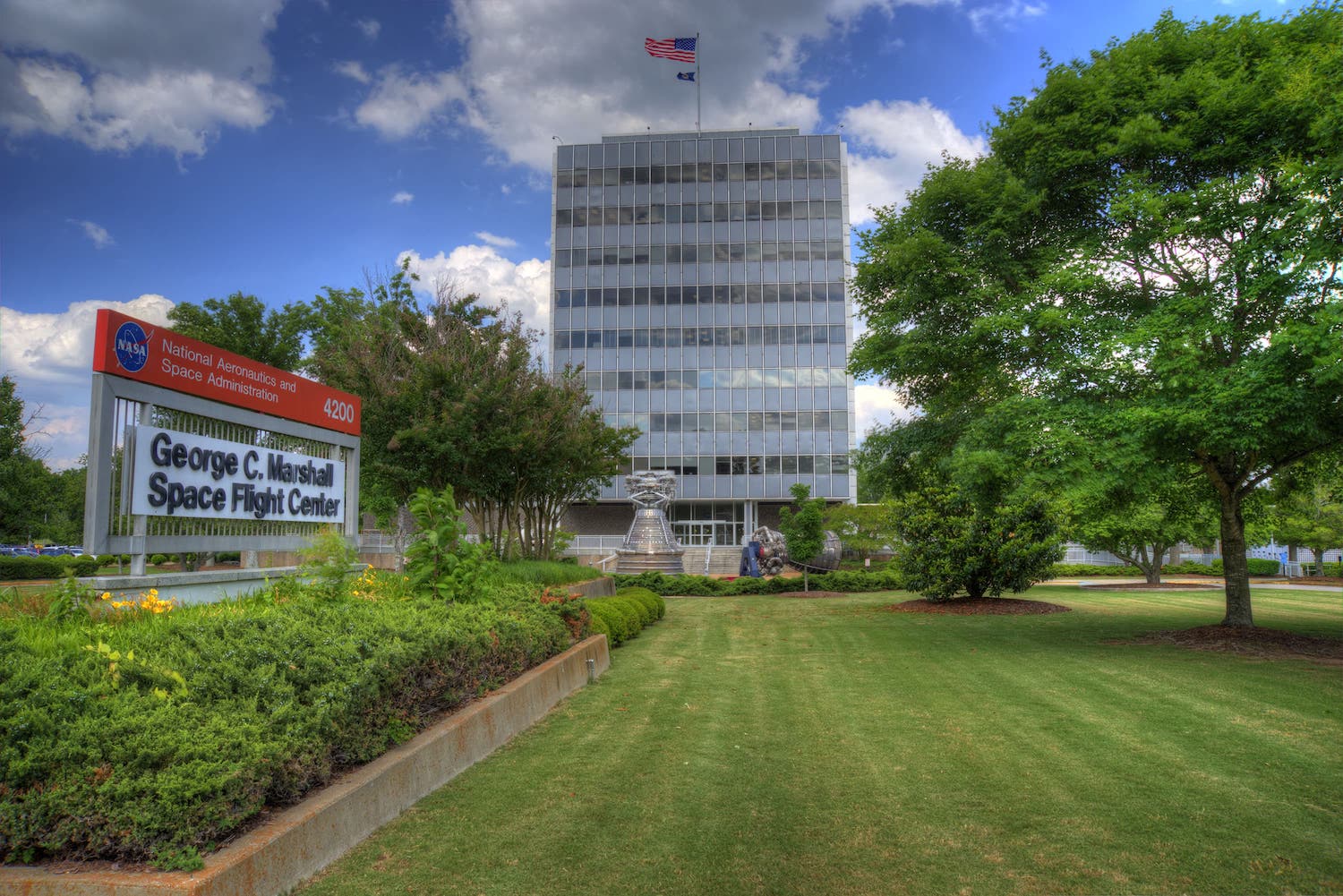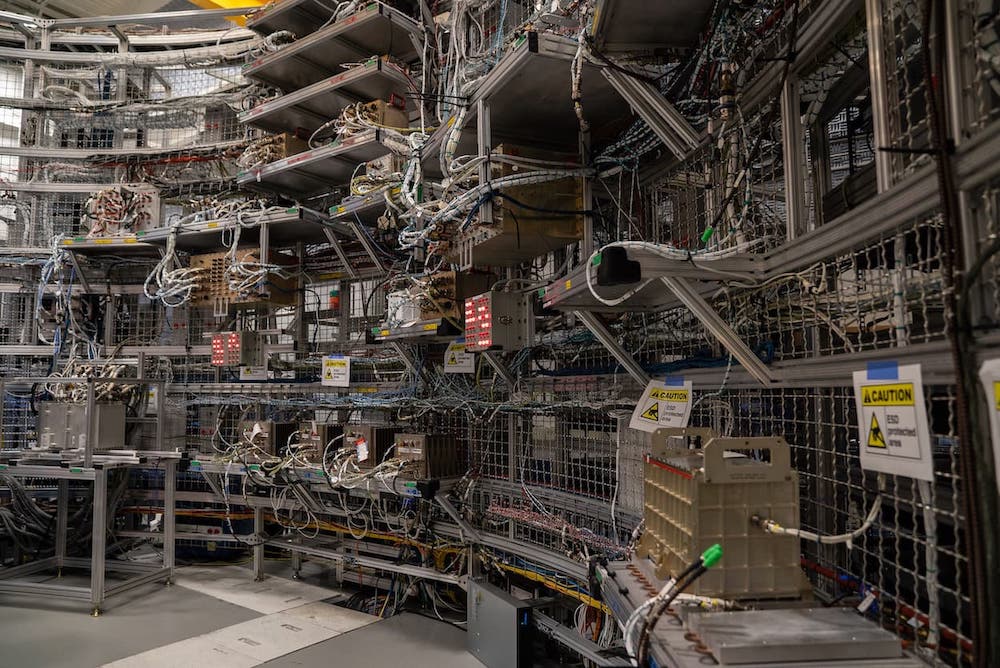Tech Took Us There
Community of Tech alumni advances space exploration at NASA Marshall Space Flight Center

At NASA Marshall Space Flight Center (MSFC) in Huntsville, Alabama, there is a team of scientists, engineers, computer programmers, and business professionals who solve complex technical problems, advance technologies, and develop science instruments and complex space systems. And within that team are approximately 80 Tennessee Tech alumni who are advancing the mission of space exploration.
Three Tech alumni and MSFC electrical engineers—Leigh Anne McMahon, John West, and DeLisa Wilkerson—say they are grateful for the education they received that prepared them for such challenging yet rewarding careers.
McMahon, ’88 electrical engineering, has worked at MSFC for 30 years. She is currently a special assistant/technical manager, and she works with technologists and innovators at NASA to break new ground in different technology areas that will make it possible to return to the moon through the Artemis lunar exploration program and continue to explore the universe.
“I enjoy working at NASA, and specifically at Marshall, because of the mission we are working, for the opportunities that I’ve had to grow and develop, and especially because of the community,” said McMahon. “I knew I wanted to become an electrical engineer for NASA from a very young age, inspired by the Apollo and Skylab missions. Now, I get to support the building of rockets and various types of landers and habitats that will enable us to explore the universe and learn more about everything around us. MSFC has been a great place for me to stretch and challenge myself to be the best engineer/leader/innovator I can be. There’s a sense of purpose and a feeling we are all in this together that results in a positive community spirit.”
West, ’89 electrical engineering, has also worked for NASA for 30 years. He is the assistant division manager of the Electrical and Optical Subsystem Design Division. The engineers in this division work with electronics vendors to design, build, and test the many electronics boxes that will operate and control the NASA Space Launch System rocket. They also design, fabricate, integrate, and test electronics for hardware and experiments that will be on the International Space Station. The optics team is currently fabricating mirrors for an x-ray observatory that will launch in 2021 to observe x-rays from the space environment near black holes and neutron stars.
“I enjoy the environment of working with teams here to create items that will operate in the space environment,” said West. “Most of the hardware we develop is one-of-a-kind, so each project brings new and interesting challenges.”
Wilkerson, ’87 electrical engineering, is a stages avionics element discipline lead engineer in the Avionics Systems Integration Branch where she manages, coordinates, and provides engineering expertise for the design, development, analyses, test, integration, implementation, and evaluation of avionics and software for Space Launch System Stage Avionics.
“I support Space Launch Systems Stages Avionics—the ‘brains’ of the rocket—which includes interactions with various disciplines from engineering level subject matter experts to Program Management, working with both MSFC and SLS contractors,” said Wilkerson. “The SLS Avionics work takes place at MSFC, Michoud Assembly Facility, Stennis Space Center, Kennedy Space Center, and Boeing and contractor facilities. There is so much exciting work going on at MSFC. You can work multiple projects at many different levels. If you have an idea to improve access to space or space science, the MSFC management is very supportive. The people here are very dedicated and are always willing to pitch in and get the job done.”
McMahon, West, and Wilkerson say one of their favorite things about working at MSFC is the sense of community. They also say that within the MSFC community is a smaller sub-community of Tech alumni.
“The electrical engineering undergraduate program at Tech was a challenging one that prepared me for a good career at MSFC,” said West. “The individuals I know here who graduated from Tech have had successful careers at NASA. Having been through the program myself, I know the quality of education my fellow alumni received, and know I can rely upon them to do what is necessary on the job.”
“I take great pride in my electrical engineering degree from Tech and when I started work at MSFC, I felt confident that I had the training to do what I needed to do,” said Wilkerson. “When you know someone is from Tennessee Tech, it gives you that common background. Everyone I have met has been proud of being a TTU graduate. This last year I had within my branch three generations of Tech graduates—myself (80s), another engineer (90s) and an intern (2019).”
McMahon added, “Because Tech is a smaller school, it is always a treat to run into fellow alumni, especially when it comes to those who were at Tech while I was there. We can share stories of professors we had in common and classes we took together and how they helped shape our approach to engineering and our attitudes about our work. Tech was the right environment for me, and that made all the difference. It helped me build a strong foundation for how I thought about work—and how I wanted to do work—for the rest of my life. Tech taught me a lot about myself and the kind of engineer I wanted to be. That has served me well ever since.”

Marshall Space Flight Center in Huntsville, Alabama, is one of NASA’s largest field centers, with a total workforce of nearly 6,000 employees and an annual budget of approximately $2.8 billion. Credit: NASA

The Systems Integrations Lab at NASA’s Marshall Space Flight Center in Huntsville, Alabama, includes flight computers and avionics identical to the core stage avionics for NASA’s powerful Space Launch System rocket. Engineers working inside the lab create real-time launch vehicle simulations for the rocket’s extensive and incredibly intricate flight software and avionics hardware. Credit: NASA

